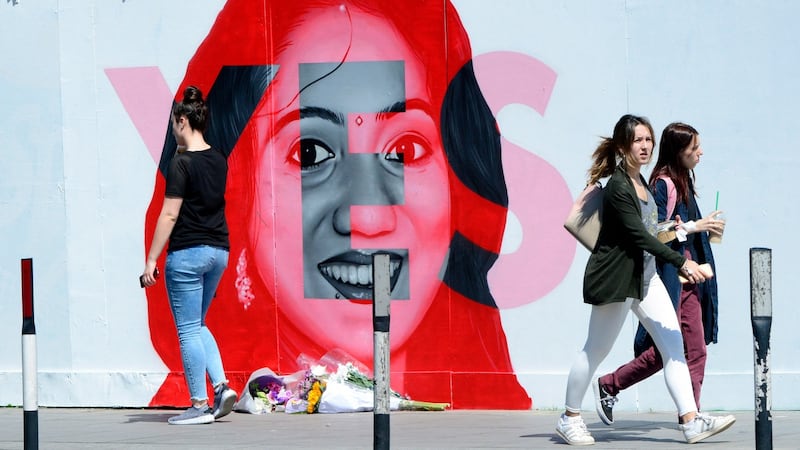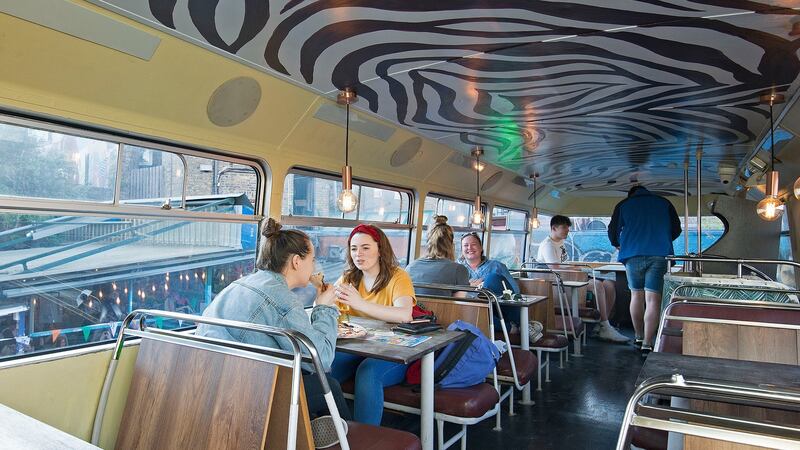The Shaw is dead, long live the Shaw. The announcement that the Bernard Shaw, Bodytonic’s pub on Dublin’s South Richmond Street, is closing after 13 years is very difficult to see in isolation. The sense that cultural and creative venues in the capital are under attack is not just a narrative, it is a reality. The impact the Shaw’s closure will have is both real and symbolic.
Its absence from Dublin’s social scene will be pronounced because of the multifaceted nature of its existence. It was a rough-around-the-edges venue whose beauty lay exactly in those imperfections. As a live-music venue it was one of the nurseries for Ireland’s hip-hop scene now exploding with creativity. As a space for DJs, it prioritised experimental and avant-garde music. As a gathering space, it drew friends who became artistic collectives.

As a canvas, it hosted the best street artists in the country, and has given us some of the most compelling contemporary Irish artworks, including Aches’ incredible mural of Savita Halappanavar. It birthed Brewtonic, the drinks arm of Bodytonic, which has added to the craft-beer movement in Ireland that is now mainstream. It hosted markets and talks. Its food venue, Eatyard, gave small, independent Irish food companies a space. It had its own identity, vibe and community. It mattered.
We need to ask ourselves now, what is worth saving in Dublin, and who is going to save those things?
Last October, the Shaw applied to Dublin City Council for the retention of its backyard outdoor area. Residents had objected to the noise. The council granted permission for three years. However, when it was appealed to An Bord Pleanála they refused permission, indicating that the Shaw was not in step with the “emerging pattern of development in the vicinity”.
The entire block surrounding the Bernard Shaw has been made derelict for development. The Charlemont Street flats were demolished. For a while it was rumoured that yet another giant tech company was going to be taking up residence in the area. Two large We Work offices now bookend the block.
The Shaw is symbolic too because it revelled in its dilapidation. It created a compelling visual environment when such things were not purpose-designed for Instagram. Yet anyone who wandered around its neighbourhood in recent times could see its days were numbered. The cranes told us all about the “emerging pattern of development”, standing as they do now like grim reapers above the city, picking off spaces that favour community and creativity over deep pockets and profit.
Unlike the many socially siloed Dublin venues, the Shaw united disparate tribes. This diversity, or mix, is how ideas are born, on dancefloors and in smoking sections, and in beer gardens, where people who are superficially different find common ground. The ironic thing is Dublin is buzzing with creativity, but that creativity is in opposition to the direction of the city. We need to facilitate that, not punish it by making it homeless.
For those who think the Bernard Shaw is an eyesore, or that it’s only a pub, or that it doesn’t matter, or that everything has to change in the name of progress: you already have your Dublin. You have your Press Up restaurants and your bathroom selfies and your glass and steel behemoths. You have your fishbowl glasses and your subway tiles and your themed bars.
And that’s grand. I’m delighted people who are into one version of socialising have somewhere to go. Each to their own. But why can’t people who value other things have their Dublin as well? Why can’t we have our dancefloors and our laneways and our graffiti spots and our rough and ready rooms? Why can’t we have our raves and our late nights into early mornings and our cheap beer and our decent tunes? Why can’t the city be multiple things for multiple people instead of the sanitised, homogenised one thing that it has become?

Mainstream culture will always end up commodifying the things the likes of the Bernard Shaw gives rise to – there’s a reason you’re drinking hoppy craft beer, and taking photos of a pizza bus at Electric Picnic, and have a print on your wall by an Irish street artist. And it’s not down to Wetherspoons.
Who is going to put a halt to Dublin losing every interesting space it has? Dublin City councillor Mannix Flynn’s response to the Bernard Shaw losing its backyard shows how important it is to have local politicians who actually understand the value of these spaces. He told the Journal at the time: “A bunch of cool hipsters can think it’s an amazing place. But the level of anti-social behaviour that goes on is incredible, and the noise is appalling.”
Trying to carve out a life where one's environment reflects and enables creativity, culture, curiosity, a sense of discovery, vibrancy, and a hint of transgression, feels so difficult in Dublin right now
Flynn holds himself as our pro-culture local representative, but his comments run completely counter to his friend-of-the-artist PR. We need better local representatives who set out to protect spaces that matter, not brush them aside because they don’t match their own conservative ideologies.
For a long time, atop the Bernard Shaw site, stood a piece by Dublin graffiti artist Maser that originally featured in the 2011 Dublin Contemporary art exhibition . The piece depicted Daniel O’Connell, and a Hollywood-style sign with text declaring EMANCIPATE YOURSELF. We can now contextualise this artwork as either a tombstone or a warning sign that we heed.
Trying to carve out a life where one’s environment reflects and enables creativity, culture, curiosity, a sense of discovery, vibrancy, and a hint of transgression, feels so difficult in Dublin right now. The walls are closing in, like an Indiana Jones booby-trap, the cranes circling, the student accommodation and hotels and offices flying up like time-lapse videos. Do we emancipate ourselves by leaving or giving up, or do we emancipate the city by building an alliance that says: no more, these are our streets and our spots.
What’s it going to be?










